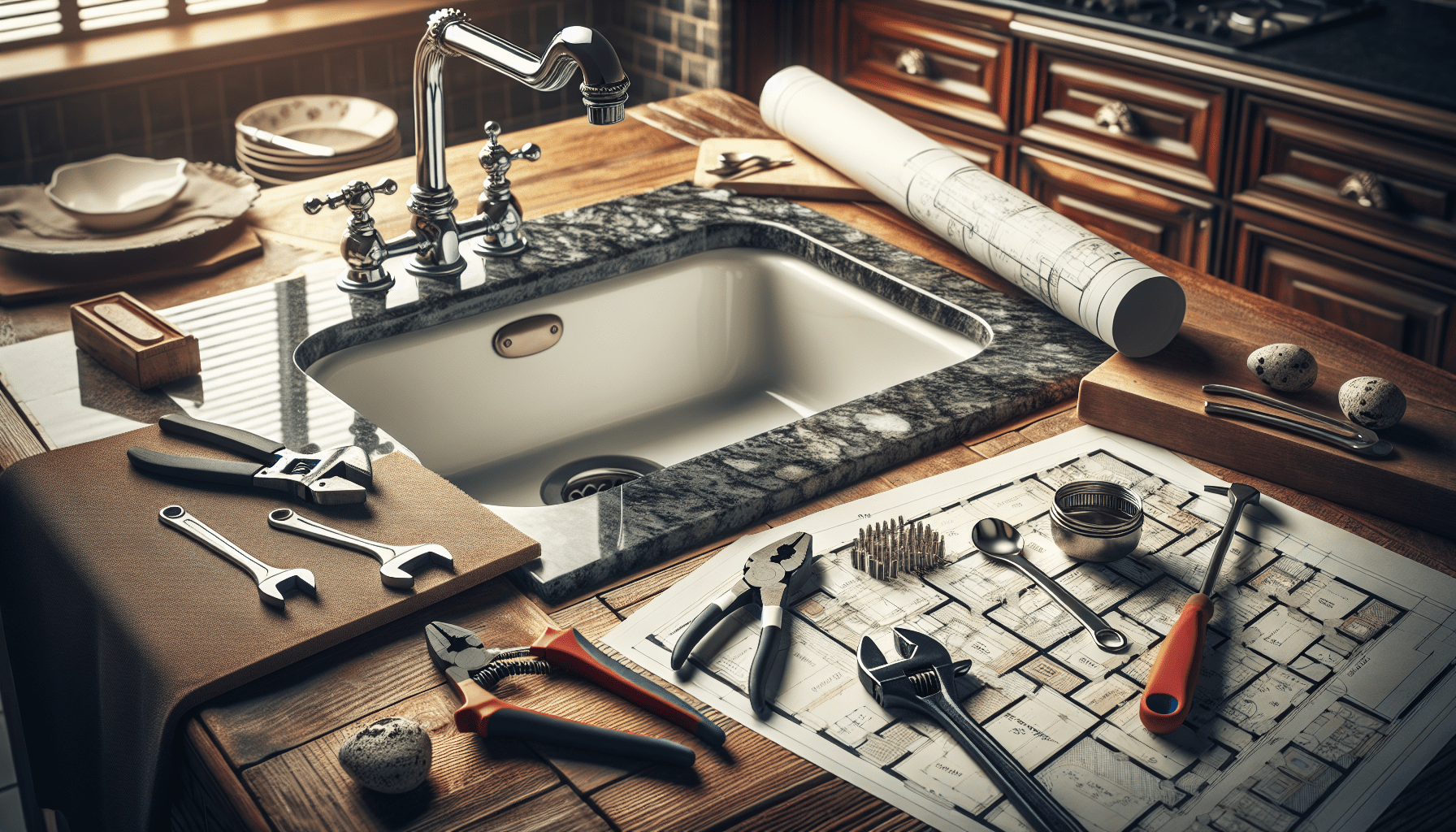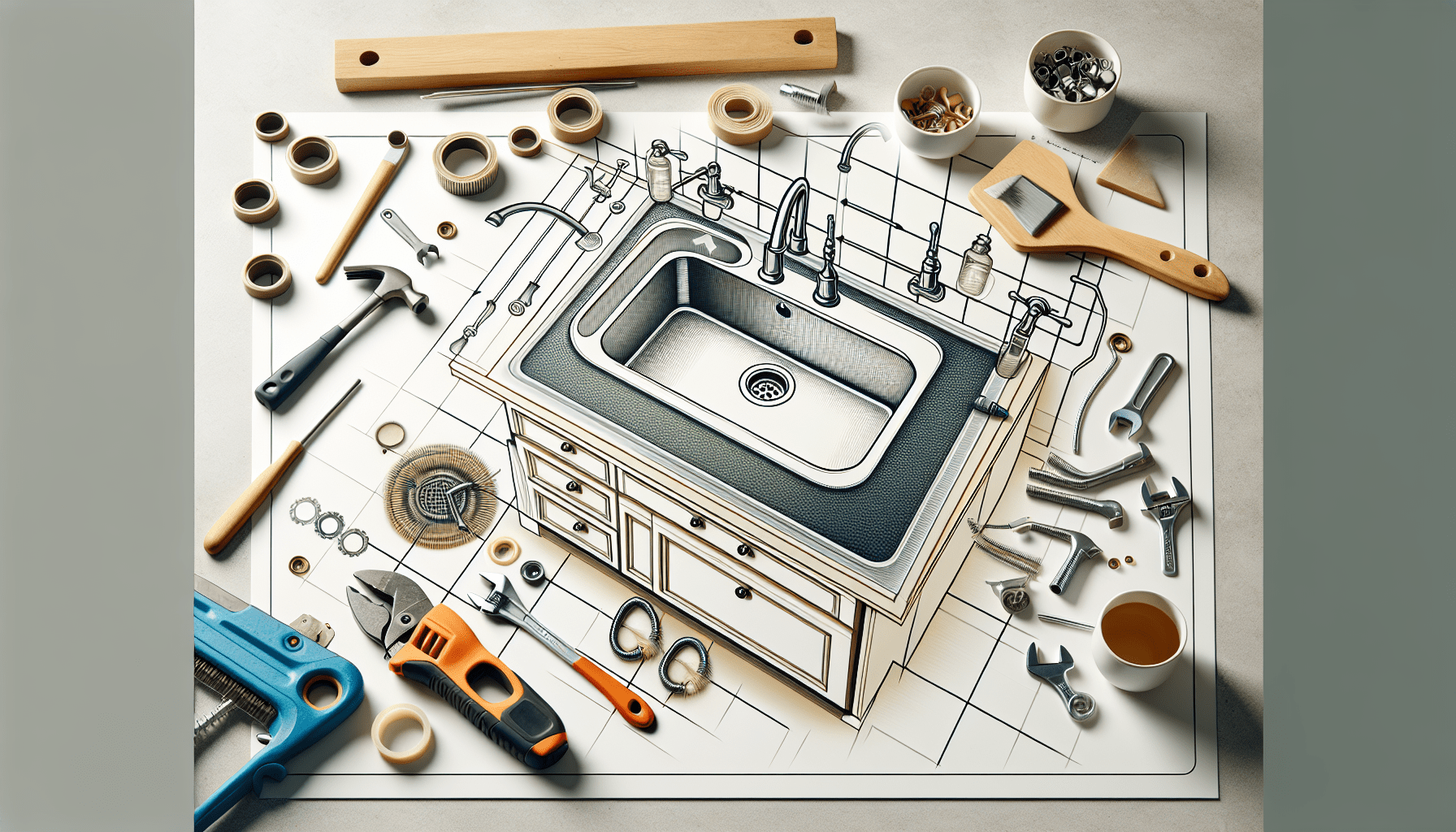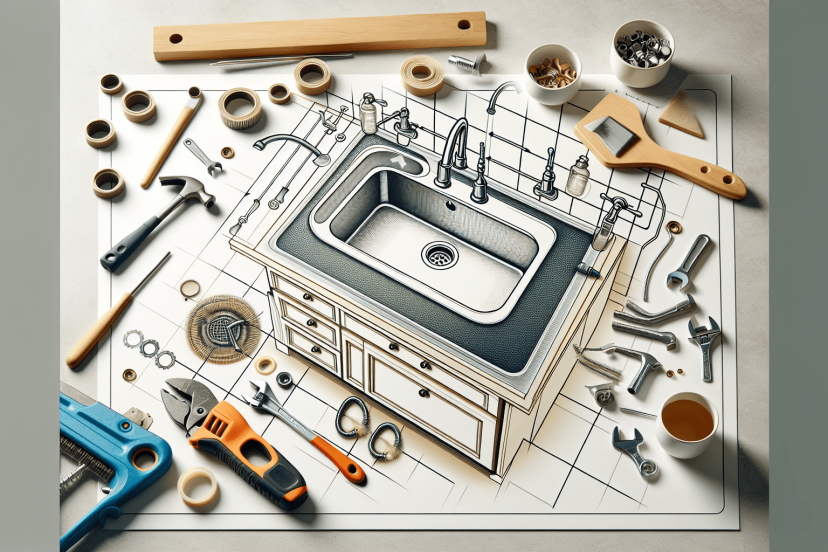Can I Keep My Sink When Replacing Countertops?
So you’ve decided to upgrade your kitchen and replace those old, worn-out countertops. But wait, what about your beloved sink? Don’t worry, you won’t have to wave goodbye to it just yet. When it comes to replacing countertops, you’ll be happy to know that you can actually keep your sink in most cases. Whether you have a drop-in sink or an undermount sink, there are a few factors to consider, but with the right approach, you can easily incorporate your existing sink into your brand new countertop. Let’s explore the options and find out how you can keep your sink when replacing countertops.

What to Consider Before Replacing Countertops
When considering replacing your countertops, there are several factors you should take into account. One important consideration is the condition of your sink. Assess whether the sink is still in good condition and functioning properly. If the sink is damaged or showing signs of wear and tear, it may be worth considering replacing it along with the countertops.
Another crucial factor to consider is the compatibility of your sink with the new countertop material you plan to install. Different countertop materials have varying requirements for sink installation, so it’s essential to ensure that the sink you currently have or plan to keep is compatible with the new material.
Lastly, you need to consider the size and style of your sink in relation to the new countertops. If the sink is too large or doesn’t match the desired aesthetic of the kitchen, it may be worth exploring alternative options. Keep in mind that replacing or upgrading the sink can provide an opportunity to enhance both the functionality and appearance of your kitchen.
Options for Keeping the Sink
If you decide to keep your current sink when replacing the countertops, there are a few options to consider. You can choose to remove and reinstall the sink, upgrade to a new sink, or replace the sink altogether.
Removing and Reinstalling the Sink
One option is to remove the sink from the existing countertop and then reinstall it once the new countertops are in place. This option can help save costs on purchasing a new sink and allows you to maintain the familiarity and functionality of your current sink. However, it is crucial to ensure that the sink is compatible with the new countertop material and that it fits properly in the designated space.
If you’re not confident in your ability to remove and reinstall the sink yourself, it might be best to hire a professional to handle the task. Hiring a professional ensures that the sink is removed and reinstalled correctly, minimizing the risk of damage to the sink or new countertops.
Upgrading the Sink
Another option to consider is upgrading your sink. If you’re already investing in new countertops, upgrading the sink can complement the overall aesthetic and functionality of your kitchen. Consider factors such as sink style, size, and material. There is a wide range of options available, including stainless steel sinks, farmhouse sinks, and composite sinks. Choose a sink that not only fits your personal style but also meets your practical needs.
When upgrading the sink, it’s important to ensure that it fits properly in the designated space and is installed correctly. Improper installation can lead to leaks and other issues, so it may be best to leave this task to a professional unless you have experience with plumbing and sink installation.
Replacing the Sink
If your current sink doesn’t meet your needs or no longer matches the desired style or function of your kitchen, replacing it entirely may be the best option. Replacing the sink allows you to choose a completely new style and material that suits your tastes and meets your functional requirements. Additionally, a new sink can add value to your kitchen and enhance the overall aesthetics of the space.
When replacing the sink, it’s essential to properly dispose of the old sink. Check with your local waste management facilities or recycling centers for proper disposal methods. Some areas have specific guidelines for disposing of sinks, especially if they contain certain types of materials such as porcelain or ceramic.
Countertop Material Considerations
Different countertop materials have various requirements for sink compatibility. Here are some popular countertop materials and their corresponding sink compatibility considerations:
- Granite: Granite is a durable and popular choice for countertops. Sinks can be under-mounted, top-mounted, or integrated with granite countertops, providing flexibility in sink options.
- Quartz: Like granite, quartz countertops offer flexibility in sink options. You can choose between under-mount, top-mount, or integrated sinks based on your preference and style.
- Marble: Marble countertops are known for their elegance, but they can be more delicate and porous than other materials. Care should be taken when choosing a sink, ensuring that it is compatible with the material and installed correctly to prevent any damage.
- Butcher Block: When it comes to butcher block countertops, top-mounted sinks are the most commonly used option. However, it’s important to select a sink that complements the warm and natural aesthetic of the wood.
- Stainless Steel: Stainless steel countertops are often paired with under-mount sinks for a sleek and seamless look. The sink should be properly sealed to prevent water damage to the countertop.
- Concrete: Concrete countertops offer versatility in sink options. You can choose between under-mount, drop-in, or integral sinks, depending on the desired aesthetic and functionality.
When selecting a countertop material, consider the sink options available for each material and choose the one that best suits your needs and preferences.
Worktop Measurements and Modifications
Before installing a sink in your new countertops, you’ll need to determine the correct size and make any necessary modifications to the worktop.
Determining the New Sink Size
To determine the new sink size, measure the existing sink’s dimensions, including the length, width, and depth. Take accurate measurements to ensure the new sink will fit properly in the allocated space. Keep in mind that the sink’s measurements should include any additional space required for mounting or sealing.
It’s important to note that if you’re upgrading or replacing the sink, the new sink may have different dimensions than the existing one. In this case, you may need to modify the worktop to accommodate the new sink. A professional can assist with making any necessary modifications and ensuring a proper fit.
Cutting and Adjusting Countertop
If modifications are needed to accommodate the new sink, such as cutting the countertop or adjusting its shape, it’s best to leave this task to a professional. Cutting and adjusting countertops requires specific tools and expertise to avoid any damage or errors. A professional will ensure precise measurements and make accurate cuts to provide a seamless fit for the new sink.

Hiring a Professional vs. DIY
Deciding whether to hire a professional or handle the installation yourself is an important consideration when replacing countertops and sink. Here are some factors to consider:
Factors to Consider
- Experience and Expertise: Installing countertops and sinks requires specific skills and knowledge. If you don’t have prior experience or the required expertise, hiring a professional is advisable to avoid any costly mistakes.
- Time and Effort: Installing countertops and sinks can be time-consuming and physically demanding. Consider whether you have the time, energy, and physical capability to undertake the installation yourself.
- Tools and Equipment: Installing countertops and sinks often requires specialized tools and equipment. Assess whether you have access to the necessary tools or if you would need to rent or purchase them.
- Warranty and Insurance: Hiring a professional often comes with the added benefit of warranties and insurance coverage. In case of any damage or issues during the installation process, a professional can provide assistance and support.
- Code Compliance: Depending on your location, there may be specific building codes and regulations that need to be followed when installing sinks and countertops. A professional will be knowledgeable about these requirements and ensure compliance.
Benefits and Drawbacks
Hiring a professional for the installation of countertops and sinks offers several benefits. Professionals have the expertise to tackle complex installations, ensure a proper fit, and minimize the risk of errors or damage. They also often provide warranties and insurance coverage for added peace of mind.
On the other hand, opting for a DIY installation can save you money on labor costs. It can also provide a sense of accomplishment and satisfaction when you successfully complete the project yourself. However, keep in mind that any mistakes or errors during the DIY process can be expensive to fix and may end up costing more in the long run.
Consider your personal skills, budget, and comfort level with DIY projects before deciding whether to hire a professional or take on the installation yourself.
Budget Considerations
When planning to replace countertops and potentially upgrade or replace your sink, it’s essential to consider the associated costs.
Cost of Sink Removal and Reinstallation
If you choose to remove and reinstall your existing sink, you may need to factor in the cost of hiring a professional plumber or contractor. The cost will depend on various factors, including the complexity of the installation, the location of your kitchen, and the prevailing labor rates in your area.
Cost of Upgrading or Replacing Sink
The cost of upgrading or replacing your sink will vary depending on the sink style, material, brand, and any additional features or accessories you choose. It’s important to set a budget and research the available options within your price range. Consider not only the initial cost of the sink but also any potential additional expenses for installation and modifications to the worktop.
Keep in mind that investing in a high-quality sink can provide long-term durability and functionality, making it a worthwhile investment in your kitchen.
Final Considerations
As you weigh your options for replacing countertops and potentially keeping or upgrading your sink, there are a few final considerations to keep in mind.
Aesthetics and Style
Consider how the sink will fit into the overall aesthetics and style of your kitchen. Choose a sink that complements the design and color scheme of your kitchen, enhancing its visual appeal.
Long-Term Plans for the Kitchen
Think about your long-term plans for your kitchen. If you’re planning to undertake a complete kitchen renovation in the future, it may be more cost-effective to replace both the countertops and sink at the same time. This ensures that all elements of the kitchen are cohesive and aligned with your vision for the space.
By carefully considering the condition of your sink, compatibility with countertop materials, and the overall style and functionality you desire, you can make an informed decision about whether to keep, upgrade, or replace your sink when replacing countertops. Remember to consult with professionals, research your options, and create a comprehensive budget to ensure a successful and satisfying kitchen upgrade.




